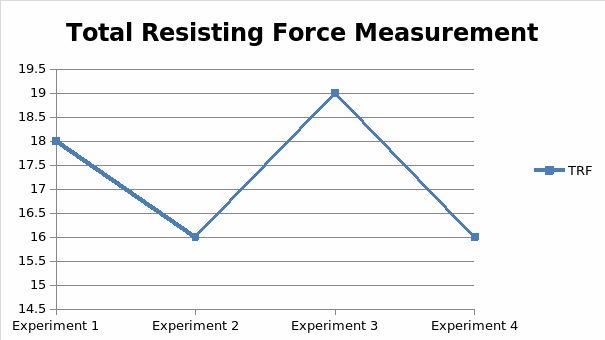Introduction
This study measures the Coefficient of Rolling Resistance (CRR) in a car. For this purpose, an experiment involving a car was set. A brief analysis of the CRR characteristics of a vehicle moving on a slow velocity on a flat surface is, therefore, provided.
Technical Details
In the course of the experiment, a Mazda CX5 car was used. The car’s mass equals 1,500 kg. In the course of the experiment, the car was being pushed at a constant speed of 16 mph, which allowed the creators of the experiment to define the CRR. The car was being pushed for eleven consecutive minutes by five of the research creators, whereas the sixth participant of the experiment was recording the results and the information displayed on the measurement devices. Speaking of which, a scale was used in the study so that the resistance force could be calculated. A wrist watch was used for measuring the time that the experiment took.
Results and Discussion
According to the data recorded in the process of the experiment, the total resisting force of the car was around 18 Newtons (18 N). It should be noted, though, that the measurement process was carried out in the setting that was far from perfect; consequently, a certain percentage of inaccuracy can be suspected (Olinchik 9).
The weight of the car was calculated based on its mass. As the test conditions show, the car mass equals 1,500 kg; therefore, the weight of the car can be calculated in accordance with the following formula:

(Bueche and Hecht 48); in other words,

Therefore, the weight of the vehicle equals 14.7 kN.
The total resisting force (TRF), in its turn, was measured with the help of a scale. The latter showed that the TRF of the car made around 180 N. Again, the possibility of inaccuracy should be born in mind, as the measurement procedure was conducted with the help of a standard scale.
Based on the data provided above, the CRR of the car in question can be calculated. The calculation must be carried out with the help of the following formula:

where C is the CRR required to locate. Therefore, to identify the CRR of the Mazda car in question, one will need to divide the TRF by the weight of the car:

thus, the TRF equals

or 1.2% (Crolla and Mashadi 272).
Conclusions and Recommendations
As the study has shown, an average TRF of a Mazda CX5 car equals 1.2%. It should be born in mind, though, that the study was conducted without the help of professional equipment. Therefore, further researches on the topic will require the use of a dynamometer or another device that will allow for retrieving more accurate results.
Works Cited
Bueche, Frederick and Eugene Hecht. Schaum’s Outline of College Physics. 11th Ed. New York City, NY: McGraw Hill Professional, 2012. Print.
Crolla, David and Behrooz Mashadi. Vehicle Powertrain Systems: Integration and Optimization. New York, NY: John Wiley & Sons, 2011. Print.
Olinchik, Michael. Mathematical Modeling in the Social and Life Sciences. New York, NY: Wiley Global Education, 2014. Print.
Appendix A
